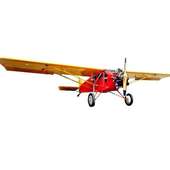- Why ‘Impoundment’ matters (11/22/24)
- Time for reform to ensure future of Social Security (11/21/24)
- A standing ovation for ‘Elf the Musical’ (11/19/24)
- AI’s influence on the 2024 election – not as damaging as feared (11/15/24)
- Tackling childhood obesity in rural Nebraska: A long-awaited solution (11/14/24)
- Polls aren’t perfect, but they help us listen—and act (11/8/24)
- Win or lose: Voters urged to maintain perspective (11/5/24)
Editorial
Nebraska has bright spots in its energy effort, despite survey
Wednesday, October 10, 2012
Nebraska is in the bottom 10 states when it comes to implementing energy saving policies, but that doesn't mean we don't do some things very well.
Massachusetts ranked No. 1 when it comes to utility and public benefits programs, transportation, building energy codes, combined heat and power policies, state government-led initiatives around energy efficiency and appliance and equipment standards.
Nebraska scored 9.5 out of 50 points for 42th place, according to the State Energy Efficiency Scorecard released last week by the American Council for an Energy-Efficient Economy.
We were docked for lack of transportation policies, combined heat and power policies and appliance standards.
But the Lincoln Journal Start reported that Ben Foster, a senior policy analyst at the ACEEE, gave props to Nebraska for its popular Dollar and Energy Saving Loans program, one of the largest in the country.
Initially funded by oil overcharge settlements in the 1980s, the program is now a revolving loan system that finances energy improvements such as siding, windows and HVAC systems.
When a loan is approved, the State Energy Office loans half the amount at zero percent interest, and the local commercial lender provides the other half, for a blended interest rate averaging 5 or 6 percent.
"It's been in place a long time, about 27,000 loans have been disbursed and about $270 million in loans," Foster told the Lincoln newspaper. "I think this is a real good example for this kind of program, and Nebraska should be proud of that."
He also lauded Nebraska utilities for their efforts to save energy, and noted that, as a low-population density state, such efforts are difficult.
The ACEEE survey doesn't take factors such as Nebraska's ethanol production into account, but perhaps it should. The Cornhusker state is already a leader in that form of alternative energy, and is in a good position to excel in new types of alternative fuels as well as wind and solar energy.
But there's no reason to wait for an act of Congress to do our bit to improve energy efficiency, as the ACEEE points out.
Some of its suggestions:
* Turn down the temperature of your water heater to the warm setting (120º F). You'll not only save energy, you'll avoid scalding your hands.
* Start using energy-saving settings on refrigerators, dishwashers, washing machines and clothes dryers.
* Check out your incandescent lighting to see if some can be replaced with CFLs or LEDs. The best targets are 60-100W bulbs used several hours a day.
* Review the age and condition of your major appliances, especially the refrigerator. You may want to replace it before it dies.
* Clean or replace furnace, air-conditioner and heat-pump filters.
A little effort now, especially at the start of the cold season, will pay off big as the months go on.

